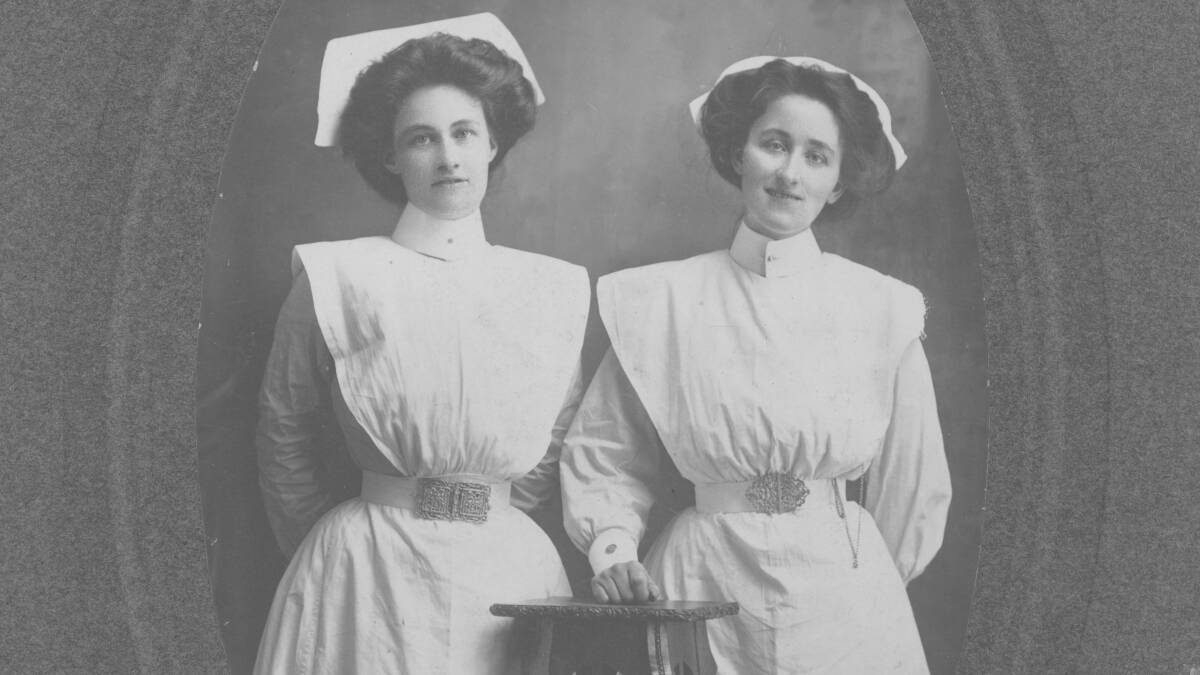
ON the day Australians stop to honour the memory of those who fought in conflicts overseas, the contribution of Orange’s young nurses to the war effort should not be forgotten.
Subscribe now for unlimited access.
$0/
(min cost $0)
or signup to continue reading
Orange sisters Lydia and Esther King, the daughter of Orange Municipal Council alderman Henry King and his wife Lydia were among a group of 25 young women from Orange who volunteered as nurses in World War I.
Lydia known as Kath, and Esther known as Wynne, were deployed to different roles overseas in the war effort and it was Kath who found herself at the coalface caring for the first wave of wounded soldiers from the shores of Gallipoli on to the hospital ship Sicilia.
Orange historian Lis Edwards who has documented the war stories of the sisters, drawing heavily on diary entries and letters back to Orange from the sisters, says nothing could have prepared Kath or Wynne for the trauma they would endure in the conflict.
“Their experiences seeing the horrific injuries would have been absolutely outside their realm.
“They would have seen nothing like it - the closest they would have ever been in their experience to these type of injuries would have been a farm accident for example,” Ms Edwards said.
Ms Edwards said adding to the sisters’ pressure of caring for soldiers with serious wounds was the diseases they encountered in war zones.
“Something like typhoid would be something they would never have seen before,” she said.
The sisters were reunited in Cairo in 1915 where many of the wounded from Gallipoli were evacuated for treatment.
The sisters enjoyed a brief respite from the conflict when in January 1916 after accompanying a group of wounded soldiers back to Australia on the Ulysses, a hero’s welcome awaited them in Orange, with a civic reception.
However the sojourn was brief and the sisters were redeployed to the warfront sailing back to Egypt on the Euripides 10 days later.
Ms Edwards said the heartbreaking aspect of the sisters’ work with soldiers many of whom had no chance of survival was they were with them as they breathed their last breath.
“Compared to nurses these days, nurses at the time were very much carers assisting the doctors.
“They would clean and dress wounds, make the patients as comfortable as they could and were there to provide comfort.
“It must have been absolutely horrific when you think about what they saw and had to endure,” she said.
“They would have seen nothing like it - the closest they would have ever been in their experience to these type of injuries would have been a farm accident"
After the end of the war when the King sisters and other Australian nurses found themselves in England, Ms Edwards said they were often assigned to far lesser roles.
“What I think was particularly telling was that some nurses were sent off by the government to do cookery, laundry and homecraft courses - it must have been quite awful after what they had been through,” she said.
Once the sisters returned to Cairo in 1916 Kath resumed a friendship she had established with Captain Gordon Carter who she nursed from the effects of shell shock and exhaustion earlier in Cairo and the couple became engaged.
However with her beau redeployed to France, Kath and her sister Wynne were transferred to Southampton in England where they continued to care for wounded soldiers from Europe and the Middle East.
Kath’s marriage in 1917 with her sister Wynne as bridesmaid brought Kath’s career to an end as married women had to resign from nursing, however as her husband was still on duty in France she managed to find work caring for sick and wounded Australian soldiers in England.
“Sadly that is the way it was then - nurses had to resign when they were married and that tradition in the nursing profession continued for many years,” Ms Edwards said.
Wynne continued to nurse in England and France and returned to Australia in June 1918 towards the end of the war.
However a year later in 1919 she sailed to India where she nursed in British hospitals.

